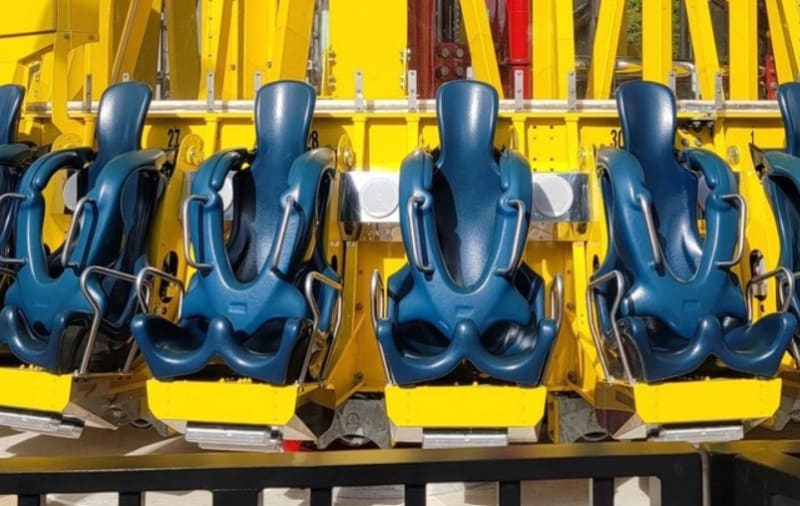Brian Malone
Industrial
A 14 year old was killed when he slipped out of the restraint harness on this free drop ride. He was a very large teen - more than 6 ft tall and about 340 lbs. From what I have seen in other stories, he exceeded the ride manufacturer's stated weight limit.
This looks like it may be a case of additive errors leading to a bad outcome:
1. It appears the over- shoulder restraint bar/harness did not have an interlock for ensuring proper latching before allowing the ride to function. Or if an interlock system exists, the interock did not work.
2. Ride operators did not check all rider's harnesses status prior to starting the ride.
3. The ride operator appears to have discounted the kid questioning why there was not any 'click'
4. The ride operator(s) either ignored the allowable weight limit for riders or were not trained to enforce the limit. Chances are there may not be a scale in the entry queue and the operators have to use a visual estimation of rider's weight.
5. Apparently the ride does not have seatbelts as a redundant safety measure. There appeared to be some questioning about a seatbelt.
6. The young man may have become anxious as the ride rose and he moved toward the front edge of the seat or pushed up on the restraint/harness in an attempt to ease his anxiety and thus changed his body angle and CG relationship, thus moving out of the cup of the seat. Anxious or not, by the very motion of the ride his body would react against the over- shoulder restraint bar/harness during the drop and if it has a rotation axis to ease entry and it was not locked it would be free to rotate and reorient the young man's body angle in relationship to the seat. Upon deceleration, the kid just slid out under the restraint.
The details are still unckear but this ride is a new construction so it will be interesting to see the failure report.


![[ponder] [ponder] [ponder]](/data/assets/smilies/ponder.gif)